Tony Davies Columns
Tony (A.M.C.) Davies and Tom Fearn describe an enhancement of the popular partial least squares (PLS) technique, powered partial least squares (PPLS), that has shown significantly better results.
Tony (A.N.) Davies and Robert Lancashire remember Bob McDonald who co-authored the first JCAMP-DX standard for infrared spectroscopy.
Tony Davies makes sure we understand “What IS and what is NOT chemometrics” and why it matters.
The Tony Davies Column once again contains a contribution from Karl Norris, who is widely regarded as the “father of NIR spectroscopy”. Karl continues to produce innovative ideas about the field and this article is no different. Building on the previous article concerning fourth derivatives, Karl has investigated the effect of varying gap sizes with some remarkable results.
Tony (A.N.) Davies is after your advice in his latest column “Your committee needs you!”. The IUPAC Subcommittee on Electronic Data Standards is keen to learn about areas where you would like to see improvements in moving your data between your analytical instruments and data analysis and reporting packages.
This Tony Davies Column is contributed by Karl Norris, known to many as “The father of near infrared spectroscopy”. He introduces his calculation method for fourth derivatives and shows how it can be used to extract instrument noise.
Tony (A.N.) Davies is impressed with the service form the UK's EPSRC National Mass Spectrometry Service Centre.
Tony (A.M.C.) Davies is again telling us to “Always look at the spectrum”. This time he uses an example from the development of a NIR spectrometer to demonstrate that one doesn’t really know what’s going on until one has “looked at the spectrum”.
Anaerobic digestion is a good solution to the joint problems of dealing with organic waste and producing “clean” energy. However, running the digesters at optimum performace is a complex business. NIR spectroscopy offers a solution to monitor a number of analytes within the reactor and in real time.
Tony (A.M.C.) Davies stresses the importance of always looking at the spectrum, even if you [think you] know there’s nothing to learn. He relates his experience with noise in NIR spectra and what he has learnt from it. He would like us all to examine spectra for abnormality before relying on automated methods.
1H NMR spectra are usually interpreted by hand, which is very time consuming, and can become a process bottleneck in fields such as high-throughput NMR. Greater automation of the spectral analysis process has become essential if NMR is to be of value as a high-throughput analytical method in the future.
Tony Davies and Tom Fearn present “A digression on regression”. They turn their attention to one of the simpler regression techniques, Classical Least Squares (CLS). As well as an explanation of the basics, they explain why it is not often used in spectroscopy, and give the pros and cons of various regression techniques.
Time for a good whinge (“complain persistently and in a peevish or irritating way”—Oxford Dictionaries Online) and to get a little controversial. Having had a year to look at the resources available to us to help educate our budding spectroscopists, I have been disappointed that much of the educational resources available online appear incomplete or outdated. For a generation of students brought up in schools with interactive whiteboards, good quality spectroscopic teaching materials of this nature are almost non-existent.
I recently “discovered” a very interesting radio programme on BBC Radio 4. It is “devoted to the powerful, sometimes beautiful, often abused but ever ubiquitous world of numbers”. A few weeks ago we were asked to say what we were doing while listening to the programme. The next week we were told that nearly 2000 e-mails had been received and this data had been given to information designer David McCandless to turn into a graphic. When this was trailed I got the impression that something new and exciting was going to be displayed and I thought that the graphic would include sound. The graphic is good but rather “ordinary” and I was disappointed. This got me thinking about how we display information. Have we made any advance in the last 25 years? Could sound be used!
Analytical Information Mark-up Language, better known as AnIML, has been around as a concept for a number of years, but how does an analytical chemist use it in the real lab? A team of R&D scientists at LGC has been finding out.
<p>In last year’s <a href="https://www.spectroscopyeurope.com/td-column/and-now-something-complete…">August/September</a> issue of <em>Spectroscopy Europe</em> I wrote a column about my “discovery” of computational chemistry and asked if anyone was interested. A satisfying number of readers answered the on-line survey with very positive comments but none more so than Patrik Johansson who e-mailed me about his delight with the column and to assure me that there was “indeed a bunch of scientists out there that do work on IR (and Raman) using both experimental and computational techniques—I am one of them”! This column is the first result of the ensuing e-mail conversation and is due to Patrik. I remain excited by the possibilities of computational chemistry particularly as Patrik thinks that an approach to NIR spectroscopy is indeed possible.
Christmas is a time of giving and it is with great pleasure that we are able to report the news that Dr Michael Heise, a friend of many years both personally and of this column, has recently been awarded the title of Honorary Professor at the University of Applied Sciences of South-Westphalia in Iserlohn, Germany.1 Mike has been regarded for a long time as an “Internationaler Experte für Infrarot-Spektroskopie”, as the Iserlohn University of Applied Sciences put it on their press release!
A.M.C. Davies
Norwich Near Infrared Consultancy, 75 Intwood Road, Cringleford, Norwich NR4 6AA, UK. E-mail: [email protected]
Tom Fearn
Department of Statistical Science, University College London, Gower Street, London WC1E 6BT, UK. E-mail: [email protected]
A.N. Davies,a H.M. Heiseb and D.F. Ihrigc
aProfessor, SERC, University of Glamorgan, UK, Director, ALIS Ltd, and ALIS GmbH—Analytical Laboratory Informatics Solutions
bISAS—Institute for Analytical Sciences at Dortmund University of Technology, Bunsen-Kirchhoff-Str. 11, D-44139 Dortmund, Germany
cUniversity of Applied Sciences of South-Westphalia, Frauenstuhlweg 31, D-58644 Iserlohn, Germany
Tony Davies
Norwich Near Infrared Consultancy, 75 Intwood Road, Cringleford, Norwich NR4 6AA, UK
Fans of “Monty Python’s Flying Circus” will realise that what follows is not likely to be my usual column (and they might be hoping that it will be amusing).
Introduction
This column is about “Computational Chemistry”.

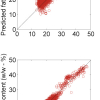
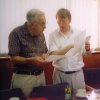
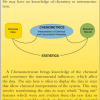
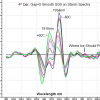
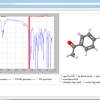
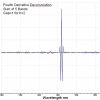

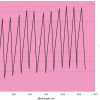
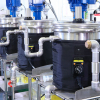
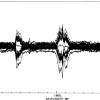
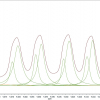
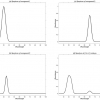
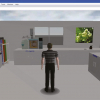
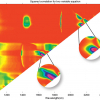
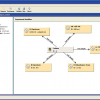
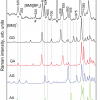
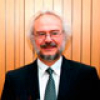
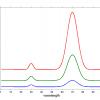
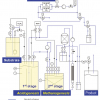

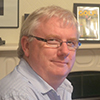 The Tony Davies Column covers a wide range of topics of interest to spectroscopists in both industry and academe, with an emphasis on data handling and processing. Read more about the
The Tony Davies Column covers a wide range of topics of interest to spectroscopists in both industry and academe, with an emphasis on data handling and processing. Read more about the